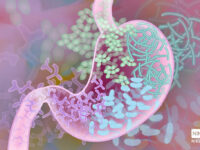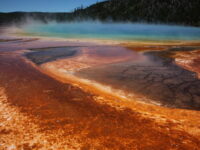The effects of human activity on the global climate are numerous and far-reaching; most people are already aware of the threats of global warming, sea level rising, and increased frequency of extreme weather events. A lesser-known process being accelerated by human activity is desertification — in which fertile, vegetated biomes become desert due to drought, deforestation, and agriculture.
Drylands are a broader categorization of ecosystems, classified by their scarce rainfall. Aridity index is relative, measuring dryness of a region based on precipitation and evapotranspiration. Drylands are defined by the United Nations Environment Program as tropical and temperate areas with an aridity index less than 0.65. This is a broad range, and depending on the ecosystem, this level of precipitation can even categorize land that supports forage for livestock or crop production. Encompassing regions like the sagebrush areas of Utah, Montana, Newfoundland, Russia, Europe, Greenland, and northern Asia, drylands comprise about 40% of Earth’s land area and are home to roughly 40% of the global population.
Dryland ecosystems are well-adapted to low levels of moisture, but the increased warming of the global climate can lead to desertification. Semiarid ecosystems, a type of dryland, are especially threatened by global warming because of longer dehydration times and increasing soil degradation. Environmental “tipping points” are a level of disturbance, often a certain temperature, in which an ecosystem experiences accelerated damage. Tipping points vary based on a number of abiotic and biotic factors. Once this threshold is reached for a dryland ecosystem, collapse and desertification can happen rapidly as vegetation dies and further upsets the delicate balance.
Current trends predict that many ecosystems will reach their respective threshold tipping points as global temperatures rise, resulting in catastrophic transitions from vegetated to desert ecosystems. However, a 2020 study from the Santa Fe Institute has presented a promising potential solution through the use of bioengineered microbes.
Ecosystem terraformation is the use of a synthetic or modified organism to counter the factors affecting tipping points. Two distinct terraformation strategies are discussed in the study, both of which genetically modify the microorganisms that are already well-adapted to the low moisture availability, high levels of UV radiation, and high temperatures of the semi-arid regions. The first strategy is C-terraformation, or Cooperation-based, and the second strategy is D-terraformation, or Dispersion-based.
C-terraformation is the engineering of cooperative loops, or mutually beneficial relationships, between vegetation and soil organisms. One example of C-terraformation is adding genes that allow additional water retention or capturing of more phosphorus to the photosynthetic bacteria already native to dryland soils. This would facilitate soil enrichment and the growth of vegetation, while the additional shade from plants would support the growth of bacteria, so both organisms benefit. D-terraformation is the engineering of microbial dispersal, or process by which microbes spread. Examples of this kind of modification include faster replication rate or increased production of endospores, which help colonize areas further away.
The study employed mathematical and computational models, simulating the synthetic modification of microorganisms to observe whether they would help to stabilize semiarid ecosystems. The researchers concluded that both C-terraformation and D-terraformation increase resistance to soil degradation and push the tipping point to higher critical degradation rates, and therefore will likely delay the time at which the ecosystem reaches the tipping point. This theoretically allows the ecosystem to withstand more change before desertification occurs, which would buy valuable time for the numerous dryland ecosystems around the world already approaching their tipping points.
These new developments are coming just in time. Scientists predict that the Amazon rainforest may also be approaching its tipping point to desertification, due to a combination of deforestation, fires, and changing weather patterns caused by climate change. As the absorber of a quarter of the carbon taken up by forests around the world every year and the producer of a fifth of the world’s oxygen, the Amazon is a critically important ecosystem. With all kinds of ecosystems at risk of desertification, discovering ways to preserve them is crucial to humanity’s survival.
While terraformation alone cannot reverse the process of desertification, these results show promise for slowing the destruction of important ecosystems. Still in preliminary simulation stages, the impacts of these genetically modified microorganisms on dryland ecosystems are not yet known. However, the authors of the study predict that their engineered microbes could help dryland ecosystems to survive for several more decades. With additional time to address the root causes of desertification, like climate change, humanity could buy time to save the world and themselves.
Sources:
Royal Society Open Science (2020). DOI: 10.1098/rsos.200161
Image courtesy of Flickr




